Enab Baladi’s Investigations Team
When the Free Syrian Army was founded by dissident officers and leaders in the revolutionary move in early 2012, the issues of financial support and overlapping agendas were not as complex as they are today. The “Free Army” factions were linked to two Military Operations and Support Coordination Rooms, known as MOC and MOM, which played a significant role in the military momentum on the ground and the organization of the internal affairs of the factions. They also played an important role on the opposition deterioration on the ground, as happened after the United States announced ending military and logistical supply, which led to a new phase of disproportionate powers.
In the beginning of 2018, the factions of the Free Army are facing a big challenge accompanied by questions and speculations about the possibility of pursuing operations against al-Assad forces in the absence of support and possible solutions to overcome this restriction, whether by relying on other sources of funding or introducing new measures that will fill the financial and military vacuum.
Going back to the early years of the “Free Army” formation, the fronts witnessed clear progress in favor of the opposition, but gradually began to withdraw after the foreign supporter interfered in the ammunition and field plans and directed targets to fight ISIS away from the sites of the Syrian regime.
In this investigation, Enab Baladi talks to a number of military leaders and analysts in an attempt to identify the reasons that led to the current cessation of international support for the “Free Army” factions and the available options for the opposition, especially after al-Assad forces opened more than one axis against them in the north of Syria.
US-Russian agreement freezes support
The cut of support for the factions was not recent as it was stated by the media earlier this year. It has started and gradually diminished since the beginning of 2017, and later became related to the conditioned of fighting against ISIS.
The fighters training stopped in July 2017 and the movements of the factions supported by the operating rooms were restricted, which was confirmed by the decision to withdraw support from the Martyrs of Islam Brigade faction and to cut the heavy weapons supply after it attacked the Iranian militias in the Syrian Badia area. This was followed by Russian raids on the faction’s controlled sites.
After the change of administration and the election of the new president, Donald Trump, Washington has opted for to reducing support for the Syrian file at the military level, considering that this support is inappropriately provided, and that all the fighting factions in are supposed to integrate within one military platform.
So far, the main reasons for the decision have not been made clear. While in July 2017, Trump justified the decision and said that the support program was “huge, dangerous, and ineffective,” the Washington Post published an article entitled “Cooperation with Russia becomes central in Trump strategy in Syria,” in which it said that the resolution is the result of US-Russian agreement.
MOC is a military coordination room with US, British, French, and Arabic representatives of Intelligence agencies formed in 2013 and based in Jordan.
It provides military support to FSA factions, especially in the southern region.
MOM, however, is a support coordination room for the Free Army factions. It is constituted by almost the same countries, but supports the northern fronts in Syria and is based in Turkey.
According to the military adviser in the “Free Army,” Ibrahim al-Idlibi, the political rapprochement between Russia and America had a major role in the interruption of factions’ support program, which negatively affected the Syrian revolution in general and militarization in particular.
Another reason of the factions’ failure in receiving support is due to an internal confusion from within, especially with regard to al-Nusra Front earlier fighting, which has cut ties with to al-Qaeda organization and has joined Hay’at Tahrir al-Sham. It is deployed in various areas in the south of Syria and most of Idlib governorate and its countryside in the north.
In the Syrian context, the beginning of each year is marked by new political plans on the relief, military, or logistics levels. What happened in the beginning of 2017 is the openness of the American policy on the “Free Army” and increased support to defeat the extremist factions and even defeat the regime and Iran. According to al-Idlibi, the timing of fighting al-Nusra Front “was the point of disagreement, which led to the cessation of support, as the factions do not intend to wage a bloody war with al-Nusra,” despite its military power which is capable of eliminating it at the time.
He added to Enab Baladi that in July 2017, the US administration asked the “Free Army” factions to be unified within one body, and then the so-called Military Operations Room was formed, which constitutes an assembly of all factions led by a person named Abu Yamen. It is affiliated with Faylaq al-Sham faction and divided into sectors (Homs, Idlib, Hama), but it has not been implemented, as it carries a tendency to eliminate the factions and work by a central decision in the battles.
Later, in early April, the ammunition decreased and problems have surfaced with regard to logistics equipment, heavy weapons and tanks, which led to a big power difference reflected on the ground. Al-Idlibi described the current situation, saying, “today’s fighter fires a bullet which is irreversible.”
The factions today are unable to withstand the pressures, as they previously found reliable support warehouses, but Tahrir al-Sham completely took control of, mainly after the recent fighting against the Ahrar al- Sham Movement, which further weakened the factions fight capacities.
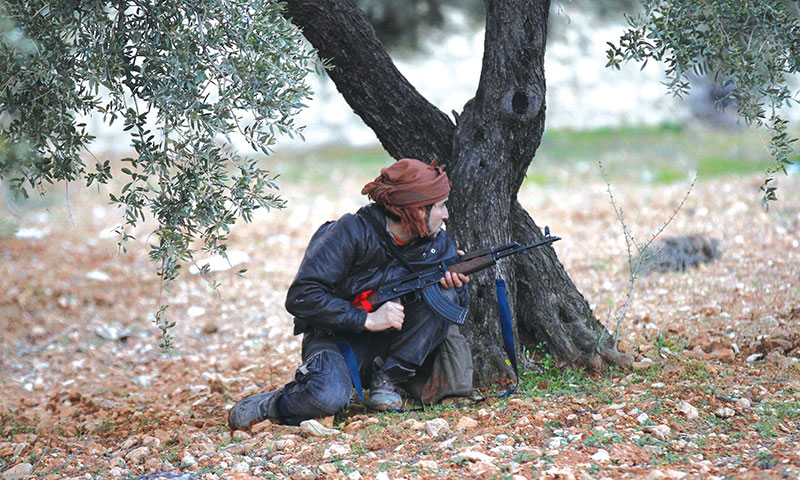
A Free Army Fighter clashing with officers of al- Assad forces in the vicinity of Idlib in February 2012 (Reuters)
A different view … factions do not want support and the problem lies in the structure
From the point of view of the military analyst, Col. Ahmad Rahal, the factions did not need support in previous years for two reasons. First, the weapon in their possession could liberate Syria completely. The second goes back to the beginning of the Syrian revolution when borders were closed and controlled by the Syrian regime. The factions, however, were able to obtain the ammunition. This is confirmed by the Eastern Ghouta factions, which relied in their operations on the booty they took from the regime in battles that were launched from time to time.
“The problem now is not about arming, but about the structure of the factions to continue fighting against al-Assad forces and the different militias which are combatting with it. Some factions are linked to political and military agendas, and others to the financial sources which contributed to its establishment in previous years,” said Colonel Rahal.
The northern Syrian fronts are witnessing battles in which al-Assad forces are trying to make incursions into the southern and eastern Idlib countryside, as a step to reach Abu al-Duhur Military Airbase, amid the talk of non-serious participation of the military factions in the region.
Military sources from the region told Enab Baladi that the response is limited to four factions in the Free Army only, which are Jaysh al-Izza, Jaysh al-Nasr, the Central Division, the Free Idlib Army as well as Tahrir al-Sham that were charged with handing over areas to al-Assad forces in the vicinity of the Sinjar village without fighting.
According to Ibrahim al-Idlibi, the factions are in a great dilemma since they are divided to two different standpoints, namely participating or abandoning in the battles. al-Idlibi pointed out that the factions must attack Tahrir al-Sham warehouses to seize and obtain ammunition, in light of international funding interruption.
He said that the Free Army factions in the south-east of Idlib (al-Nasr, al-Izza, and Free Idlib armies) revenues after the end of the support reached 35%.
In his view, the factions must consider preserving the geographical area before looking for internal alternatives to the organization process. He pointed out that the Free Army factions must defend the land in order to gain the support of the international community, which gives territories basic considerations.
Syrians expressing their opinion: Dissolving factions is one the most considered options
Enab Baladi has conducted a poll on its website, which asked the following question “In your opinion, what is the fate of the military factions in Syria after international support halted?”
Forty per cent of the participants, 300 people, considered that the best solution for the factions of the Free Army is to dissolve itself. They held the faction leaders responsible for the current situation they have reached.
“At the beginning of the Syrian revolution, there was no international support. The factions liberated three quarters of Syria with light weapons. However, after the support, the regime restored three quarters of Syria,” wrote Ali Ibrahim in his comments.
The other 39% of the participants felt that integration into a unified military body would change the reality of the military factions. In early 2107, this suggestion was put forward by the US administration and it is currently being discussed.
According to the young man Anwar al-Ahmad, if the factions unite and disengage from external support and return to the years of the Syrian revolution, the Free Army will be much more influential and will overcome the support difficulties it is currently witnessing.“I think that the factions of the Free Army should unite and start a new revolution as they did in the beginning of 2011,” said Walid Haddad.
The option of relying on self-financing was not agreed upon by the participants, and the rate of approval for this solution was only 21%, although some military analysts confirmed its success, especially in eastern Ghouta.
Hamza Shibli commented on the poll saying that “self-armament should be implemented from the beginning since the regime is buying weapons for Syria.
The stronger deserves to own weapons.”
Some observers rejected the proposals, and considered that the opportunity was over, due to the control over the past years and the fact that the factions depended on what they described as “America’s charity”
No salaries… Portions of Grants
Enab Baladi contacted the majority of Free Army factions in various parts of Syria, and received brief information about its financial situation and course of action, after the cessation of support.
Salaries are declining and changing specification
In the south, the fighter’s salary dropped to less than 40 dollars per month, whereas before fighter’s salary used to exceed 200 dollars. Therefore, the south factions lacked financial resources and were left only with little support.
The situation in the north did not differ much from the south. A leader of the Sham Legion faction, who preferred to remain anonymous, stated in an interview with Enab Baladi that the salaries within the faction had turned into grants that differed from one sector to the other, for Idlib sector differed from Hama and Aleppo’s.
The grants range from 70 to 100 dollars. The leader pointed out that this does not apply to all fighters, but to some of them.
The talks in the sixth version of Astana held in September 2017, along with the demarcation of de-escalation areas marked the major turning point in the support process. The outcome of the conference rejected several factions including the Southern Front in Daraa and the factions operating in northern Hama countryside, most prominent of which are Jaysh al-Izza, Jaysh al-Nasr, and the Central Division.”
The Military Operation Center (MOC) decided to dissolve the Southern Front and restructure Daraa and Quneitra factions at the end of July 2017.
The move came after the Southern front factions boycotted “Astana 5”, on July 4, attributing this decision to the “inability of the successive international conferences to take any serious decision that would stop the shedding of Syrian blood.”
The factions of Badia, which were directly supported by the United States, are also suffering. According to military sources in the faction of the Forces of Martyr Ahmed al-Abdo, the salaries are currently ranging from 100 to 150 dollars per member, while it ranged previously from 300 to 1,000 dollars during the thrust of military operations.
The sources pointed to the current dependence on the reserve, whether financial in terms of salaries, or military in terms of weapons and ammunition. The sources also noted that the international reduction affected only the heavy military equipment.
The salaries of Islamic factions vary according to source
On the side of the forces opposing the Syrian regime, there are also Islamic factions which are not affiliated to the Free Army, and their financial situation varies according to the sources on which they depend.
Ahrar al-Sham’s loss of Bab al-Hawa border crossing with Turkey for Hay’at Tahrir al-Sham left a significant impact on its financial composition. The fighters’ financial granting stopped for three months after the faction withdrew from the crossing and then returned in “small amounts”.
According to the information, which Enab Baladi has received from a fighter who is familiar with financial matters in the movement, the average fighter’s grant ranges from 40 to 60 dollars, while the married one gets an additional ten or twenty dollars only.
As for staff or administrators, their salaries are higher and range from 80 to 100 dollars.
The fighter noted that, in some cases, grants are more or less according to “efficiency”.
Before the withdrawal from “Bab al-Hawa,” the salary of the unmarried fighter amounted to 70 dollars while the married gets 90 dollars and the administrative member gets 100 to 150 dollars.
He explained that previously, the fighters used to receive relief basket and warming costumes, in addition to salaries, which amounted to 20 dollars, as well as irregular financial incentives.
As for Hay’at Tahrir al-Sham, Enab Baladi has been able to obtain a little amount of information about the salaries of the fighters which have not changed since the formation of the former Fateh al-Sham front.
Salaries range from 100 to 350 dollars per specialty, in addition to a relief basket in some cases apart from some privileges offered to some fighters which include rent-paid homes and means of transport (motorbike).
Turkey Draws the maps of factions’ support in northern Aleppo
Speaking of the military forces affiliated to the Free Army in northern Aleppo, the National Syrian Army, which formation has been announced by the Ministry of Defense of the Syrian Interim Government, on December 30, 2017, relies on the revenues of the northern Aleppo countryside crossings. According to its affiliated factions, these revenues are the only source of support for the financial sector, which is responsible for three newly formed troops in the region.
Turkey has set the financial map to support the factions to which it had been previously providing military and logistical support against ISIS since August 2016, with the launching of the military Operation Euphrates Shield that led to the expulsion of ISIS from the entire northern and eastern region of the province.
The military structure includes a unified military command for all factions in the “Euphrates Shield” area. Three troops emerge from within, namely the National Army, Sultan Murad Division, and Sham Legion.
After the formation of the troops, the factions were stripped of their names and divided into three teams in each corps and three brigades within each division, in addition to including three battalions of fighters in each brigade, according to the New Staff.
Colonel Haytham al-Afeesy, the deputy Chief of Staff, to which The National Army is affiliated, stated to Enab Baladi that the Army relies on self-support, provided by the interim government.
He explained that the distribution of revenues of the crossings “will be supervised by specialized committees to ensure fair distribution among all.” He stressed that “all fighters of the three corps will receive the same salary, after considering the military rank.”
“The support of the fighters is not unified in the region,” said Abu Walid al-Azi, a leader of the Sultan Murad Division. He pointed out that “until the end of last year, support was distributed between Turkey, America, and MOC room.
According to the leader, the Turkish-backed fighter receives a monthly salary of 300 dollars, while the former US-backed fighter used to receive 200 dollars and the MOC room had earlier provided 150 dollars.
The financial support of the three corps did not start until January 6, 2018. According to the leader, two months ago, the MOC paid the fighters the last salaries until the end of December 2017. MOC’s financial support has stopped since then.
Al-Azi explained that “the support of the corps will depend on the crossings of Bab al-Salamah, Al-Rai, Jarabulus, and new crossings under Turkey’s supervision, provided that the revenues are transferred to the Agricultural Bank of Turkey to be then equally divided at the end of each month between the factions of the Free Army, the interim government, and the opposition coalition, as he put it.
There are no specified salaries according to the new mechanism until now, nor did any combatant in the three corps receive any financial revenue, according to the leader of the Sultan Murad Division, who pointed out that the division’s leader determines the salaries of his officers, stressing that all combatants will receive the same amount of money after the distribution begins.
The Syrian borders with Turkey are linked with 10 border crossings, only three of which have been partially operational: Bab al-Hawa Crossing Border in the northern countryside of Idlib, Bab al-Salamah near Azaz in northern Aleppo as well as Jarabulus in the eastern countryside of Aleppo, and finally Al-Rai crossing which was officially opened in December 2017.
Syrian opposition factions are currently running the four crossings under direct supervision of Turkey.
Factions which depend on self-financing
Some opposition factions have started looking for self-support instead of external support, which would enable them to continue their work by controlling important economic outlets in the areas under their control.
Within this framework of self-support emerged the experience of the two factions Jaysh al-Islam and Faylaq al-Rahman in eastern Ghouta, in addition to the experience of Hay’at Tahrir al-Sham which dominated Idlib’s economic parts.
According to Enab Baladi’s information, Faylaq al-Rahman established projects inside and outside Ghouta, which started with digging two commercial tunnels between Ghouta and the regions of Qaboun and Barzeh that have reconciled with the regime.
Faylaq al-Rahman worked on operating its tunnels through the trade of food supplies, electrical appliances, mobiles, computers, and solar panels, as well as the currency conversion and exchange, which led to huge revenues that reach millions of dollars.
It also founded the Rahma Foundation for the management of the tunnels, which had monthly profits of 30 million liras, according to one of Rahma Foundation directors, whose name Enab Baladi was reserved to mention in a previous investigative report entitled: Ghouta Economic Map… Tunnels and Cavities. The management of the tunnels was ended with the control of al-Assad’s forces over Qaboun and Barzeh.
In addition to the aforementioned, Faylaq al-Rahman faction entered into a series of development projects through institutions it established in early 2016 such as cattle and broiler farms and shops, as well as investing in the agricultural sector through the planting of hundreds of dunams of land and the establishment of an agricultural unit managed by engineers to finance the formation of necessary foodstuffs to feed its employees.
Faylaq al-Rahman has a series of traders who work in collecting copper, aluminum, and raw materials which had been previously sold to Damascus through tunnels.
As for Jaysh al-Islam, which is considered as the largest formation in al-Ghouta, like Faylaq al-Rahman, it managed commercial, profit, and development projects to finance its military body and support its combatants. It worked on opening a series of commercial projects inside and outside al-Ghouta. In addition, it managed the “Al-Wafedeen” (incoming) camp crossing through establishing an economic office which runs its projects and discharging its goods in the market.
It also set up offices for the disposal and transfer of funds, in addition to its work in the agriculture field as well in the suburbs of Duma to supply and finance itself.
In its turn, Hay’at Tahrir al-Sham in the north of Syria sought self-support, although external support has not been reduced. It managed to take control of all the economic resources in Idlib and its countryside after a military clash with Ahrar al-Sham, as whoever seizes the governorate’s economy would eventually extend its military control in it.
Hay’at Tahrir al-Sham established the so-called General Organization for Cash Management and Consumer Protection, which aims to regulate exchange operations and prevent monopoly and manipulation of currency prices. This was also meant to control the market of money management and control the movement of funds and exchange offices.
It also took control over the files of the water institutions, the real estate register, the civil registry, the local administration and agriculture through its Civil Service Administration, which imposed itself on the electricity sector.
In July 2017, it worked on merging its electricity institution with the institution of Ahrar al-Sham in an effort to harness any service objects that stood in front of its expansion project. Whoever holds the power lines would eventually hold the region’s economy, due to their high dependence, especially in bakeries and water pumps. In addition, they knew that Idlib’s economy is mainly based on agriculture and therefore needs water and electricity, which are the lifeblood of any society, according to what the economic researcher Ayman Desouky, have previously stated to Enab Baladi.
As part of its economic plans, in November 2017, Hay’at Tahrir al-Sham handed over all the civil services that are run by the civil administration to the Salvation Government which was formed in the city of Idlib, and which is considered as the civilian body of Hay’at Tahrir al-Sham.
It is impossible to not to talk about the strategic border crossing of Bab al-Hawa, of the northern region, which is under the authority of a civil administration of Hay’at Tahrir al-Sham, because it constitutes a financial revenue to the party that controls it, whether from the entry and exit of persons or the entry of goods.
Concessions and gratification rewards
Colonel Khalid al-Mutlaq
Since 2013, the supporting countries started to put their hands on the factions of the Free Syrian Army by providing their conditioned support. Those who accepted the conditions, continued receiving support, while those who did not, were sidelined and even killed in many cases, and the assassinations of some of the leaders that were carried out on the liberated lands’ area are a clear testimony.
After the supporting countries managed to clearly control the decisions of the factions, these factions started implementing the agendas of their funders, and so, the revolution’s objectives were lost, and the areas were handed over one after the other, which weakened these factions themselves and thus they gradually started to make concessions under the pretext of the cessation of support.
With this process, Al-Assad has been indirectly supported by the funding countries that are carrying out agendas dictated by those who control the world and who clearly wish to reproduce al-Assad and his regime.
The military factions that receive external support are doomed to dissolution and disappearance after accomplishing the mission of burying the revolution as a result of selfish, factionist, and partisan interests over the interests of the Syrian people and their main cause of protest.
It is possible that the supporter gives gratification rewards to some leaders and some parties in a fifth position in a state ruled by al-Assad and his gangs. unless something emanates from the factions and the Syrian people which may turn things upside down.
Those who seek support sources will not find any support unless they rely on self-financing, which some factions have succeeded in implementing, especially in the eastern Ghouta, as the nucleus of the “Dawn of the Nation”.
There is a decision that has been made and heard by many of the world’s decision-makers: It is not permissible to have two armies in Syria, al-Assad’s army or any other army. Otherwise, why have they weakened the Free Syrian Army? Why was every effort made to unify the leaders of the Free Syrian Army hindered? … This is totally clear, as for what is happening now from the formation of the Ministry of Defense and Staff, it represents only those who created it, and who control the coalition and the interim government for personal and partisan agendas, or else how to explain the exclusion of many officers who are leaders and recognized for their patriotism, and the appointment of some officers who are highly questioned in leadership positions. This is a farce which our people paid for with their blood and suffering. What is happening now in Idlib is the biggest proof. Thousands of our people are being displaced under the trees with no shelter, while the interim government and the Ministry of Defense are blindly busy in issuing data and sharing positions.
In this context, it is difficult to form a unified army, especially if those who are in charge of forming the army represent a particular category of people who only care about higher positions and who brought our revolution to such a gloomy condition.
if you think the article contain wrong information or you have additional details Send Correction
النسخة العربية من المقال
-
Follow us :
Most viewed
- Reduction of Fifth Corps: Pressure on Moscow reflected in Syria
- Saudi Arabia to prosecute sheikh Saleh al-Shami and ten Syrians in May
- Hidden aspects of Iranian consulate building targeted in Damascus
- AANES receives first batch of Syrian refugees deported from Iraq
- US House of Representatives passes "Captagon II" bill


















 A
A
A
A
A
A
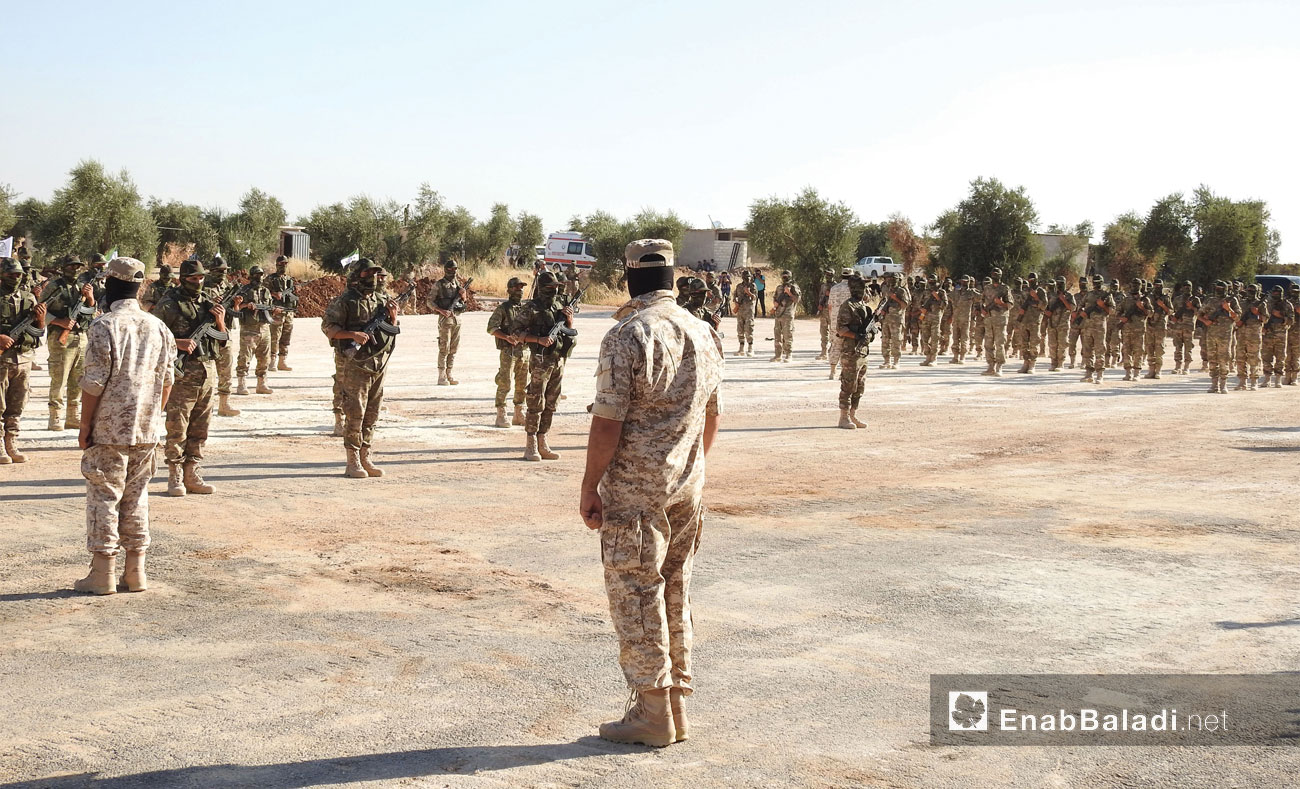



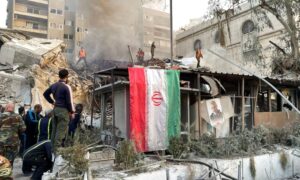

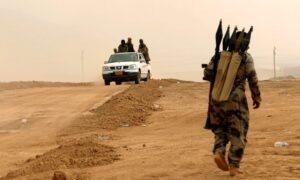
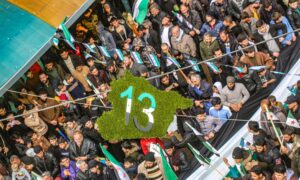

 More In-Depth
More In-Depth